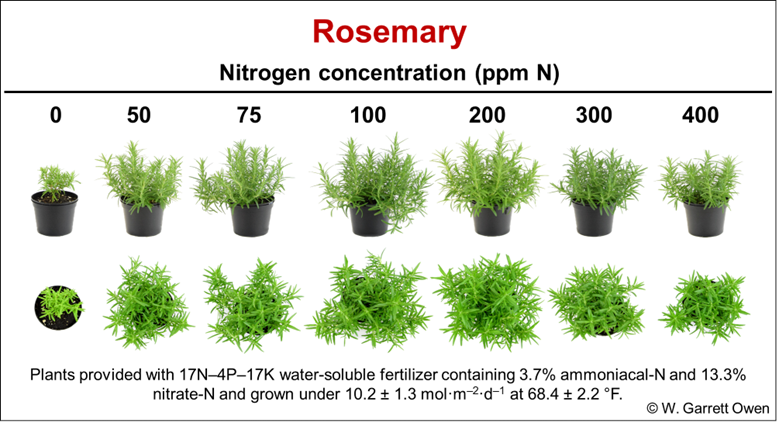
Optimizing Rosemary Fertility
Rosemary (Rosmarinus officinalis L.) is a popular culinary herb and containerized greenhouse crop. To produce fresh cut rosemary or marketable containerized plants, growers must optimize the production environment and inputs such as mineral nutrition. Recent research determined optimal nitrogen (N) concentrations of containerized rosemary to range from 50 to 200 ppm N. Plants grown with 50 to 200 ppm N resulted in a 53% increase in overall plant size and 50% increase in plant dry weight. Under fertilized (≤50 ppm N) plants exhibited stunted plant growth with chlorotic (yellow) foliage and low substrate electrical conductivity (EC) levels. Overfertilization with ≥300 or 400 ppm N resulted in stunted plant growth and plants with some root browning due to high EC levels of the substrate. Therefore, growers should provide 50 to 200 ppm N to optimize rosemary plant growth and monitor the root-zone by using recommended 1:2 Extraction, saturated media extraction (SME), or PourThru methods to determine substrate EC and pH values.

W. Garrett Owen
Assistant Professor of Sustainable Greenhouse and Nursery Systems, The Ohio State UniversityW. Garrett Owen is an Assistant Professor of Sustainable Greenhouse and Nursery Systems in the Department of Horticulture and Crop Science at The Ohio State University. He has an appointment in research, teaching and Extension. His area of expertise is plant nutrition; plant growth regulation; and production problem diagnostics.
